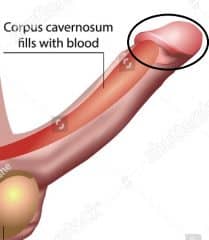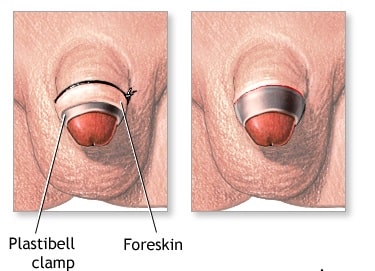Penis circumcision can be a painful experience, especially when it is done as an adult; however, some weeks after circumcision, the area where the tissue has been removed should have healed somewhat. Circumcision is quite common among people of certain ethnicity and religion. It is the removal of the foreskin that covers some part of the glans. It is commonly done when male children are babies, usually some weeks old, to facilitate better healing.
Circumcision, although not done by every male, has some religious and health importance and benefits, and when done right, it heals within a few weeks. However, there are cases of complications as a result of infections. To be safe, perform circumcisions in a hospital or approved circumcision centers.
This article will expose the procedure of circumcision in babies and adults. It will also let you know the benefits of having your foreskin removed. You will also know how well you should have healed some weeks after circumcision.
What is Circumcision and How is It Done?
Circumcision is the surgical removal of the foreskin that partially covers the glans of the human penis. It is a cultural and religious practice in some ethnicities and religions, such that males that have not been circumcised are regarded as either unclean or yet to be a man. Although many people are aware of the religious and cultural reasons for getting male humans circumcised, it is not very clear to them why circumcision is important healthwise.
Circumcision is done on males at any age. usually, babies get circumcised from a week old, and adults can get circumcised at any age they so desire to get it done. In babies, the foreskin is completely attached to the penis but separates as the child gets older. However, there are cases where this separation does not occur – Phimosis.
The procedure for getting circumcision done is surgical and it requires the doctor performing the procedure to get the baby to lay on its back and restrain the arms and legs. Afterward, they apply anesthesia to help the patient with the pain. Usually, anesthetic injections are supplied under the skin of the penis or an anesthetic cream is applied to the penis. After the anesthetic has taken effect, the procedure begins.
The procedure continues with the doctor attaching a clamp – the Mogen clamp, the Plastibell device, or the Gomco clamp – to the penis and clipping off the foreskin with a scalpel. The ring usually stays on for some time and falls off later. A circumcision procedure lasts about 10 to 15 minutes.
Benefits of Circumcision
You might think, why get circumcised?
There are benefits attached to removing the foreskin and some of these benefits are healthy. They include:
Aesthetics
There is the popular notion that circumcised penises are better looking than uncircumcised ones. With the foreskin removed, the glans is visible and its cone-like shape can easily be seen. Generally, circumcised penises have better appearances.
Prevention of certain penile conditions
Certain conditions that affect the penis, such as balanoposthitis, which is characterized by the inflammation of the glans and the foreskin can be avoided when the foreskin has been removed. The condition occurs when the foreskin is not in its normal position. Other penis conditions that can be avoided by circumcision are phimosis and paraphimosis.
Reduced risk of contracting STIs and UTIs
The foreskin tends to trap dirt, sweat, and other body fluids, which may give rise to microbial buildup, causing sexually transmitted and urinary tract infections. However, when the foreskin has been removed, you can easily clean all dirt and body fluids, preventing microbial growth, and possible infections.
Reduced risk of Cancer
When a sexual partner is uncircumcised and can harbor microbes under their foreskin, they can also transmit such microbes to their sex partner(s). There is a high chance that an uncircumcised man’s partner can have cervical cancer, compared to a circumcised man.
Risks and Complications of Circumcision
As it is with every surgical procedure, there are risks attached to circumcision, but they are minimal when done right. They include:
- Reaction to anesthesia
- Pain
- Bleeding
- Irritation of the glans
- Meatitis
- Infection
Weeks After Circumcision in Pictures
After the surgical procedure, a circumcised male can leave the hospital in an hour. The doctor wraps the penis in gauze after applying an ointment. The days after the procedure, when the surgical cut is healed, your penis may look like this.

Frequently Asked Questions About Male Circumcision
What Age is Best for Circumcision?
Circumcision is done at every age. babies, as from a week old can have their penis circumcised. Children, teenagers, and young adults can also have their foreskin removed at their respective ages. Also, adults can have their foreskin removed when they so wish.
However, the foreskin should be removed when a child is one week old or above. This helps the glans heal better and grow with the shaft in uniformity.
What is the Circumcision Procedure?
The circumcision procedure is surgical and it involves the use of anesthetics to manage the patients’ pain. A circumcision clamp is used to hold the penis in place and a sterilized scalpel is used to remove the foreskin around the glans. Afterward, an ointment is applied to the penis and it is wrapped in gauze. The circumcision clamp falls off on its own at about 8 days after the procedure.
Is Circumcision Painful?
Like every surgical procedure, circumcision can cause pain. Although before the procedure begins, an anesthetic injection or cream is applied to the penis to reduce the severity of pain. Also, after the procedure, analgesics such as acetaminophen, are usually prescribed to help with the pain.
How Long Does It Take to Recover from Circumcision?
Circumcision is a surgical procedure; however, its effect is only at the top of the penis, but painful nonetheless. The cut that is caused by circumcision usually heals between 7 and 10 days, if all goes well. However, your surgical wound may get infected and require some other treatment, which may prolong your recovery from circumcision.
Conclusion
Circumcision is a painful surgical procedure that is used to remove the foreskin partially covering the glans of the penis. It takes about 15 minutes to complete the procedure, and 10 days to heal from it. However, it is important to keep the cut from being infected. Weeks after circumcision, there is only a slight sign that the foreskin has been removed.

Ayomide is a fiction and non-fiction writer. A lover of science and everything mysterious that surrounds it, he seeks out new information to keep his interest alive.


